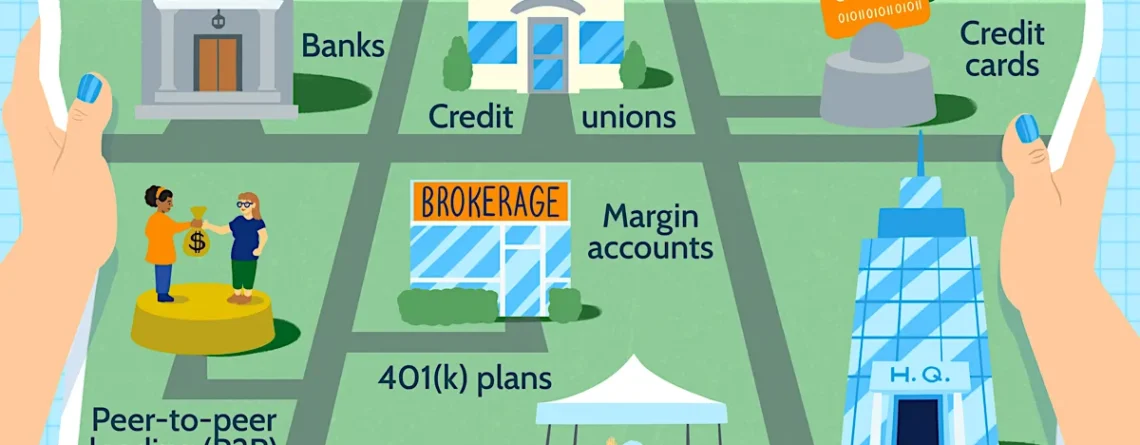Introduction
In today’s fast-paced real estate market, timing is often critical. Whether you are a buyer looking to secure a new property before selling your current one, or a developer looking to acquire a property to begin construction while waiting for a long-term mortgage, the need for immediate funds can often arise. This is where bridge loans come into play. In this comprehensive guide, we will delve into the world of bridge loan definition, explaining what they are, how they work, and when they may be the right solution for you. Additionally, we will address frequently asked questions to provide a thorough understanding of this financial tool.
Bridge Loan Definition?
Bridge loans, also known as bridge financing, interim financing, or swing loans, are short-term loans designed to bridge the gap between the purchase of a new property and the sale of an existing one. They are a temporary solution that provides the borrower with immediate funds to meet their financial needs until a long-term financing option, such as a mortgage or a sale of the existing property, can be arranged.
Bridge loans are typically used in real estate transactions, both residential and commercial, to provide a rapid infusion of cash. They offer borrowers increased flexibility, allowing them to seize opportunities, close deals quickly, and maintain a competitive edge in the market.
How Do Bridge Loans Work?
1. Eligibility Criteria:
To qualify for a bridge loan, by definition, lenders typically require borrowers to have a sufficient amount of home equity or a solid credit history. Lenders assess the borrower’s ability to repay the loan based on their income, assets, and credit score.
2. Loan Amount and Term:
Bridge loans are typically offered for a short duration, ranging from a few weeks to a maximum of two years. The loan amount depends on the borrower’s needs and the value of the existing property, which serves as collateral for the loan.
3. Interest Rates and Fees:
Bridge loan, by definition, usually come with higher interest rates than traditional loans, reflecting the short-term nature and higher risk associated with this type of financing. Borrowers should consider the potential impact on their cash flow and calculate the total cost of the loan, including any fees or closing costs.
4. Repayment Options:
Bridge loans offer various repayment options. Some loans require monthly interest-only payments, with the principal due at the end of the loan term. Others may require regular principal and interest payments, similar to a traditional mortgage. It is important to understand the terms and conditions of the loan agreement to ensure repayment obligations are met.
When to Use Bridge Loans by definition?
1. Real Estate Purchases:
Bridge loan by definition are commonly used in real estate transactions when buyers need immediate funds to close a new property purchase before selling their existing property. It allows homeowners to avoid missing out on desirable properties or entering into contingency-based contracts.
2. Property Development:
Property developers often utilize bridge loans to secure financing for new construction or renovation projects. These loans enable developers to begin work promptly, as they provide funds for acquisition, construction, or remodeling until long-term financing options are available.
3. Business Needs:
Bridge loans can also be utilized for business purposes, such as providing working capital, covering unforeseen expenses, or assisting with short-term cash flow issues. These loans allow businesses to bridge financial gaps and maintain operations while awaiting additional funding.
FAQs
1. Does everyone qualify for a bridge loan?
No, lenders have specific eligibility criteria, including requirements for home equity, creditworthiness, and a reliable repayment plan.
2. How quickly can I get a bridge loan?
The speed of approval and funding depend on several factors, such as the lender’s processes, the borrower’s financial profile, and property valuation. In some cases, bridge loans can be approved and funded within a matter of days.
3. What happens if I don’t sell my existing property within the bridge loan term?
If a borrower fails to sell their existing property within the bridge loan term, by definition they may need to seek an extension or refinance the loan to avoid default. It is crucial to have a plan in place and discuss potential scenarios with the lender.
4. Can bridge loans be used for properties that require extensive repairs?
Yes, bridge loans can be used for properties in need of repairs or renovations. However, the loan amount may be based on the “as-is” value until the repairs are completed and property value increases.
Conclusion
Bridge loan by definition offers borrowers a temporary financial solution when faced with time-sensitive real estate transactions or business needs. They provide immediate access to funds, allowing buyers to secure new properties, developers to initiate construction, and businesses to maintain cash flow. However, borrowers should carefully assess their financial circumstances, including the risks and costs associated with bridge loans, to determine if they are the right tool for their specific situation. By understanding the comprehensive definition and guide provided in this article, individuals can make informed decisions when considering bridge loans as a short-term financing option.












Leave a Reply